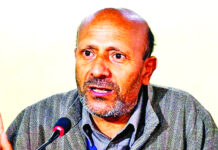As the virus spreads, India must ramp up its testing capacity, focus on the hinterland and come up with a standard protocol
The dreaded community spread has India well and truly in its grip because, from the time the pandemic began in the country, we had recorded 1.5 million cases till July 28 but have added a whopping 5,00,000 infections in just nine days. This is an average of 50,000 fresh cases recorded each day. India has breached the 20-lakh barrier and fatalities have touched the 41,000 mark. The country that has been fighting to rapidly ramp up its poor healthcare infrastructure is now snapping at the heels of Brazil, which has more than 2.8 million cases, and the US, which is leading the list of worst-hit countries with five million cases. And if the experts are to be believed, the community spread has only just begun and the next million cases may take just a little over two weeks if infections continue to spread at the same rate at which they are now. Expert opinion has it that the country needs to shift its focus on the war against the pandemic to rural India, which has multiple challenges of a high population density, patchy administration and a tottering healthcare infrastructure.
Another area where the country needs to improve its performance is testing that has been dismally slow. Till August 5, the country had just tested 16,617 people per million, which is a paltry 1.66 per cent of the population. Compare this to other nations like the US, which has tested 18.8 per cent of its population, Russia 20 per cent, South Africa five per cent and the UK 25 per cent. The Government’s excuses of overpopulation and being a poor country hold no water as even a country like Brazil, which has a much lesser GDP than ours, has tested 6.3 per cent of its population. Moreover, a small country like Iran has tested three per cent. If we are to beat the pandemic, we have to ramp up our testing and take it up to five per cent at least, which is around 32 million more people. Testing also helps us map the trajectory of the disease and prepare containment strategies or it would look like we are just flying blind as some Western experts are suggesting. Right now, while the urban centres are bending the curve, unexpected hotspots are emerging, which need to be contained lest they set off a ripple effect that can lead to a “viral” blast. Also, what is needed is a national protocol for a standardised response, better guidance and a balanced allocation of resources. The silver lining in the dark cloud is that the recovery rate in the country is continuously rising and the fatality rate has remained much below the global average. If the figures being bandied about by the Health Ministry are anything to go by, the recovery rate has risen from 51.08 per cent on June 15 to a record high of 67.98 per cent on August 7, while the fatality rate has gone down to 2.05 per cent. These two in tandem have enabled a higher and rising difference of more than 7.7 lakh between the number of recovered patients and active cases in the country, claims the Ministry. Of course, there is still a problem of unaccounted deaths and cases that may completely change the picture. Plus, we have come a long way from the time we faced a shortage of simple things like hand sanitisers to the more complex PPEs and ventilators. Now, after four months, we are actually exporting these to other nations. The two indigenous vaccines are showing promise and developers are preparing to begin simultaneous phase 2 trials that study immune response and additional safety in a large population. In some more good news, pharma major Lupin has launched its Favipiravir drug at a very reasonable price. So, while we may not yet be winning the COVID war, all is still not lost. India can live to fight another day. But we must stick to a mapping and tracking plan and not get complacent. More importantly, not let up. Given our population, we will have recurring waves.




























